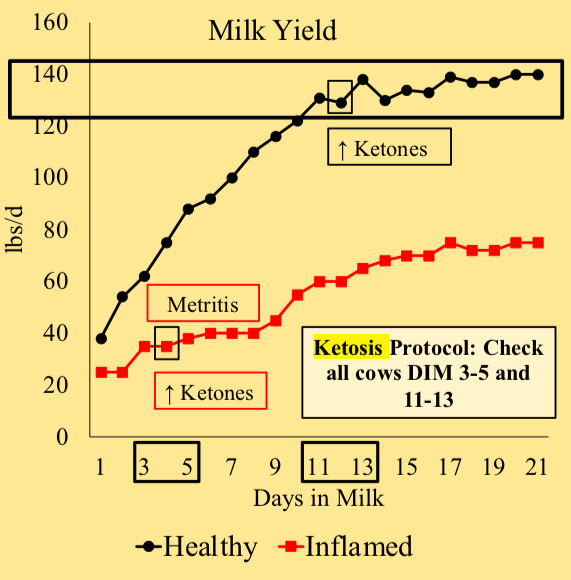Rethink Transition Ketosis
Rethink Transition Ketosis
In the first month of lactation, healthy cows orchestrate a complex biochemical symphony to produce milk. They experience their largest swings in energetic metabolites, hormones, and minerals.
Also during transition, however, any underlying nutritional health issues may “go clinical,” correlating multiple problems and associated effects.
We now know, says Iowa State’s Dr. Lance Baumgard that such correlations do not necessarily demonstrate causation, much less point unequivocally to specific treatments.
Therefore, he says, we ought to be rethinking subclinical, transition-related ketosis. Then we can better optimize management priorities, avoid unnecessary stress on high-producing cows, and save treatment and labor costs.
Dogma’s Undoing
“Hundreds of studies,” Baumgard notes, “associate and correlate NEFA (non-esterified fatty acids), BHBA (beta-hydroxybutyrate and associated ketones) and Ca (calcium) with increased risk of ketosis, decreased milk yield, LDA (left displace abomasum), metritis, retained placenta, laminitis, or poor reproduction.
“However,” he adds, “if high NEFA, hyperketonemia, and subclinical hypocalcemia are pathological, then therapeutically treating these disorders ought to improve cow health and productivity, right?”
Sorry, Baumgard says, pointing to recently published research and dairy health history, including a record of culling trends since 1996 (National Animal Health Monitoring Systems). Long-standing “ketosis dogma” is not helping to improve dairy herd health.
Don’t Mess with High Production
 During transition, Baumgard says, changes in concentrations of circulating NEFA, ketones, and Ca reflect either…
During transition, Baumgard says, changes in concentrations of circulating NEFA, ketones, and Ca reflect either…
- Normal partitioning of nutrients that healthy, high-producing cows use to prioritize milk synthesis, or…
- Consequences of immune activation and knock-on effects, likely stemming from metritis, mastitis, pneumonia, or gut inflammation
High feed intake and milk yield remain the best indicators of a healthy transition. If stress reduces productivity, then high productivity cannot be stressful.
Baumgard recalled a “real world” example from the Iowa State dairy farm during Spring 2022, which checked ketone levels as well as cow activity, rumination, and other factors against milk yield during transition. Both high-producing (“healthy”) and low-producing (“inflamed”) cows had high ketones, but at 11-13 days-in-milk there was a 60-70 lbs/day difference in milk yield.
Along with monitoring cow activity and rumination, producers can know the baseline production of each cow over multiple lactations, Baumgard says. Then they can measure the slope of increasing production during transitions. A 10-15% decrease in that slope amounts to an early warning of potential problems.
Questions?
Email FeedInsight 4U

